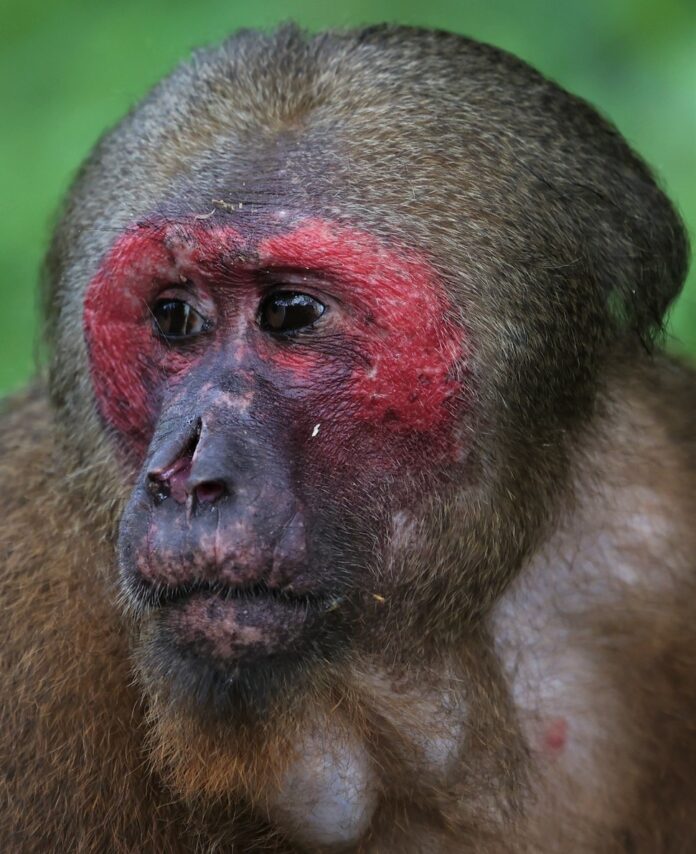Thailand-
This week’s column will highlight Thailand’s wealth of Primates. Anyone who knows me, knows I am truly an avid primate watcher with over 171 species and subspecies of primates seen in the wild in dozens of countries, ranking me #5 in the world for primates seen in the wild.
So naturally, my goal has been to document all of Thailand’s primates in their natural habitat. I wish I could say I have achieved this goal but sadly I am still shy by two species – Siamang (found only in Thailand’s deep south – I’ve heard them many times and been within meters of family groups but have yet to actually have my eyes on them!). Secondly, the mythical Tenasserim Langurs – mythical in the sense that no one has seen them in decades and we are not sure they still exist within Thailand….I would LOVE to see and photograph these!
Below is a list of the rest of Thailand’s primates and where to try to see them!
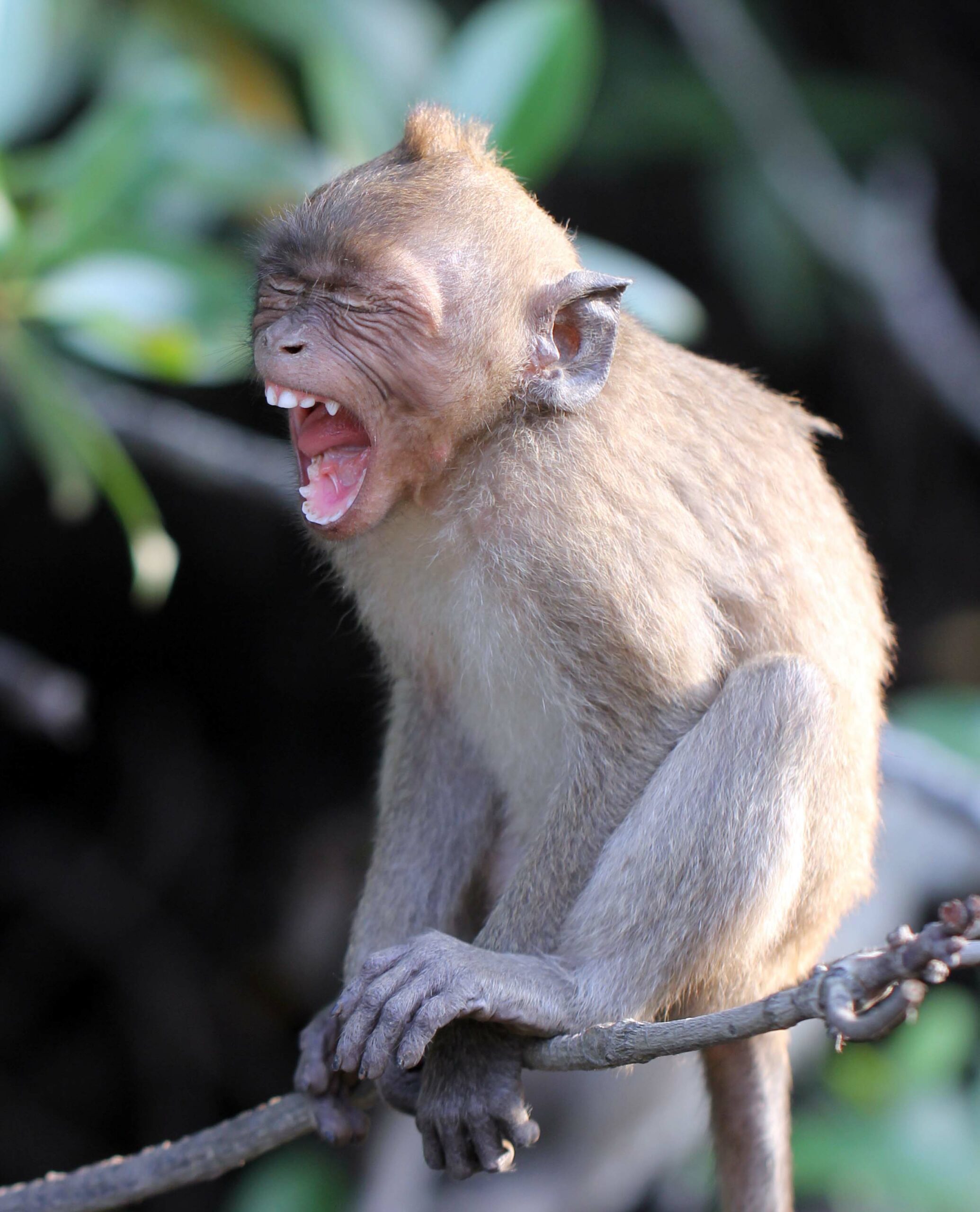
The Macaques – Hard to believe, but those pesky temple monkeys that are great beggars and mischievous little thieves, are actually represented by SIX different species!
- Long-tailed Macaque (Macaca fascicularis) – very common and can be easily seen in southern Bangkok, Pattaya, Samut Prakan, and virtually any place with mangroves or temples near forested areas.
- Northern Pig-tailed Macaque (Macaca leonina) – very easy to see in Khao Yai where ever humans are, especially the campgrounds.
- Southern Pig-tailed Macaque (Macaca nemistrina) – increasingly rare in Thailand. Often seen on the backs of trucks in the deep south of Thailand as they are often employed as coconut pickers. I’ve seen in the wild in Hala Bala Wildlife Sanctuary.
- Stump-tailed Macaque (Macaca arctoides) – about a 50/50 chance of seeing them along the road to Bang Krang Camp in Kaeng Krachan and Pala-U Waterfalls.
- Rhesus Macaque (Macaca mulatta) – a very rare primate in Thailand that can be seen with effort in Phu Kieo Wildlife Sanctuary in Chaiyaphum province and Wat Phra Phuttabat Pha Ruea in Chiang Rai.
- Assamese Macaque (Macaca assamensis) – Very rare primate species in Thailand and only remnant populations still persist, the easiest of which is at the Tham Rod Bureau of Monks in Phitsanulok Province.
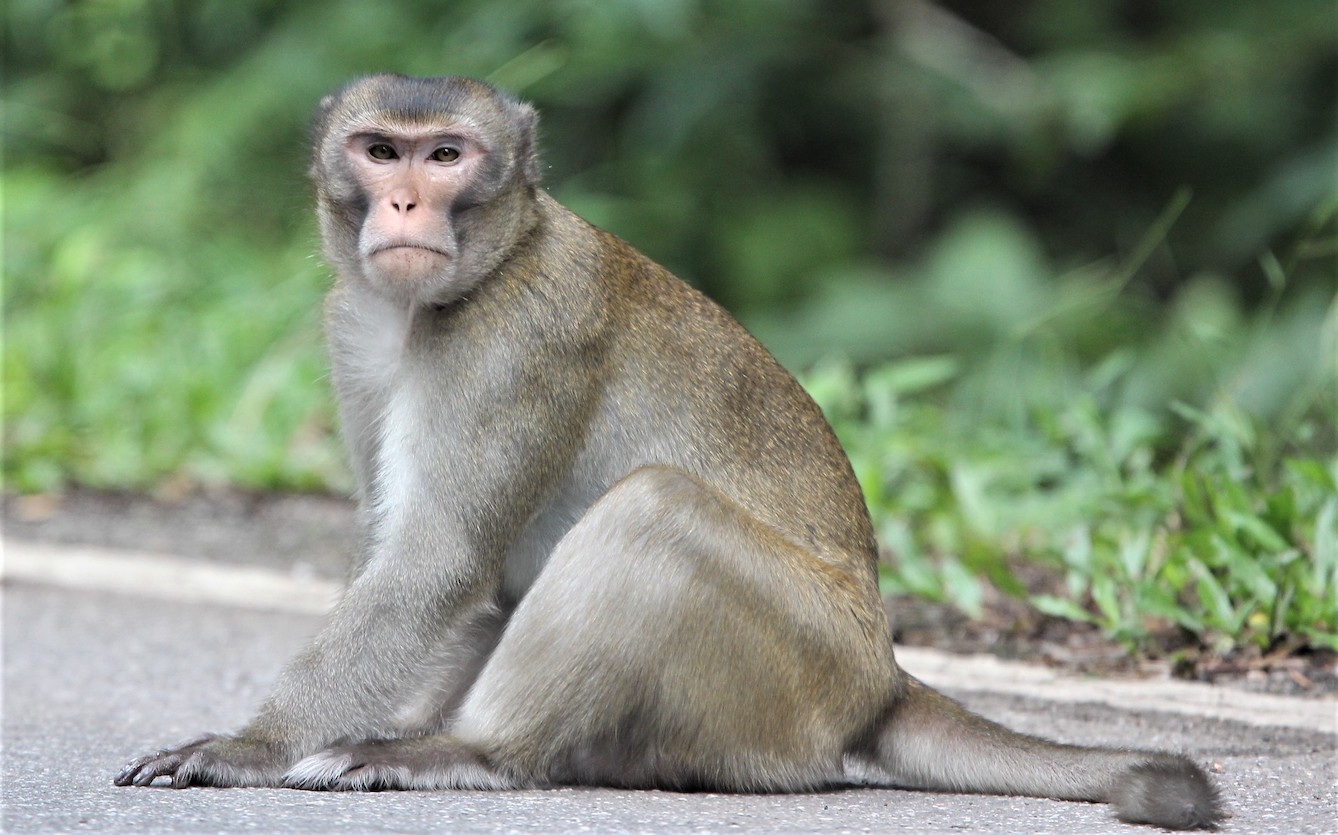
Langurs – those graceful arboreal primates
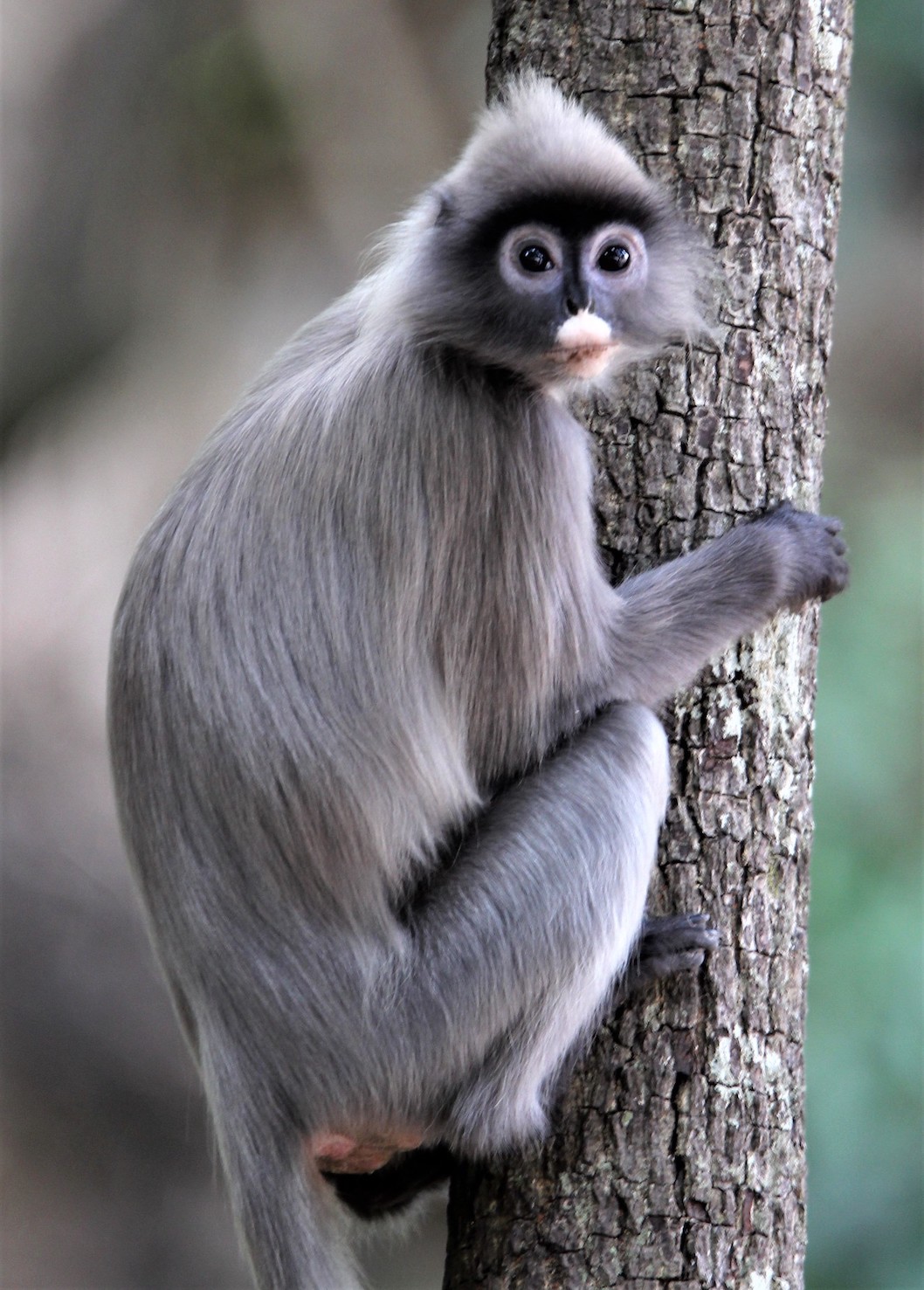
- Spectacled (Dusky) Langur (Trachypithecus obscurus) – very common and easy to see in Kaeng Krachan National Park (Bang Krang Camp).
- Indochinese Grey Langur (Trachypithecus crepusculus) – spectacular langur species that is often very difficult to see. Wat Tham Pha Pu in Loei province has a remnant group that is easy to view.
- White-thighed Langur (Surili) (Presbytis siamensis) – Hala Bala Wildlife Sanctuary is the only place to see this inside of Thailand and it is very difficult to see there!
- Germain’s Langur (Trachypithecus germaini) – Best seen in Sai Kaew Beach in Sattahip. Koh Chang has a good population too.
- Robinson’s Langur (Presbytis robinsoni) – Thailand’s newest primate species. Found with some effort in Phanoen Thung, Kaeng Krachan.
Gibbons – those awesome singing primates!
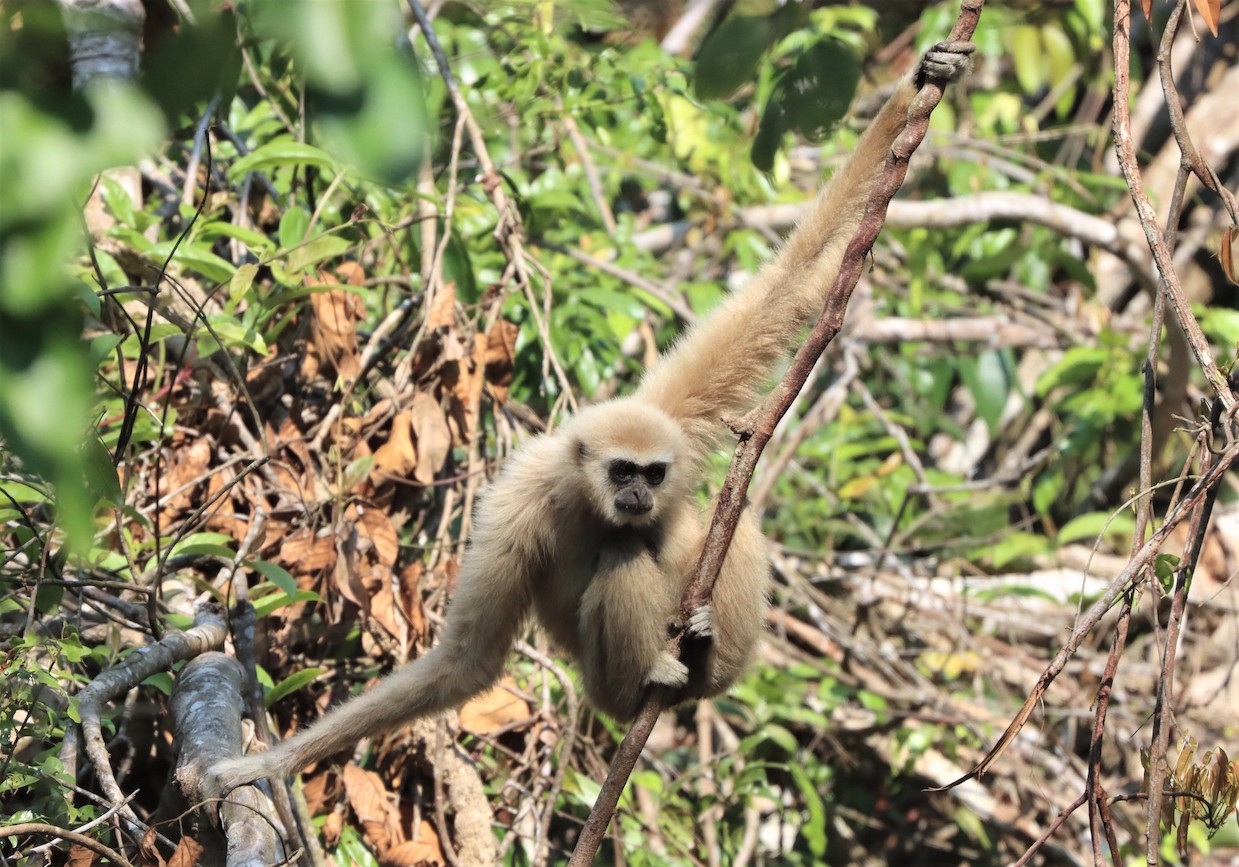
- White-handed Gibbon (Lar) (Hylobates lar) – very easy to hear and see in Khao Yai and Kaeng Krachan National Parks.
- Pileated Gibbon (Hylobates pileatus) – easy to hear but very difficult to see at Khao Yai. Pang Sida NP also has a good population.
- Agile Gibbon (Hylobates agilis) – easy to hear and reasonably viewable at Hala Bala Wildlife Sanctuary in the deep south of Thailand.
Lorises! Those cute nocturnal Primates!
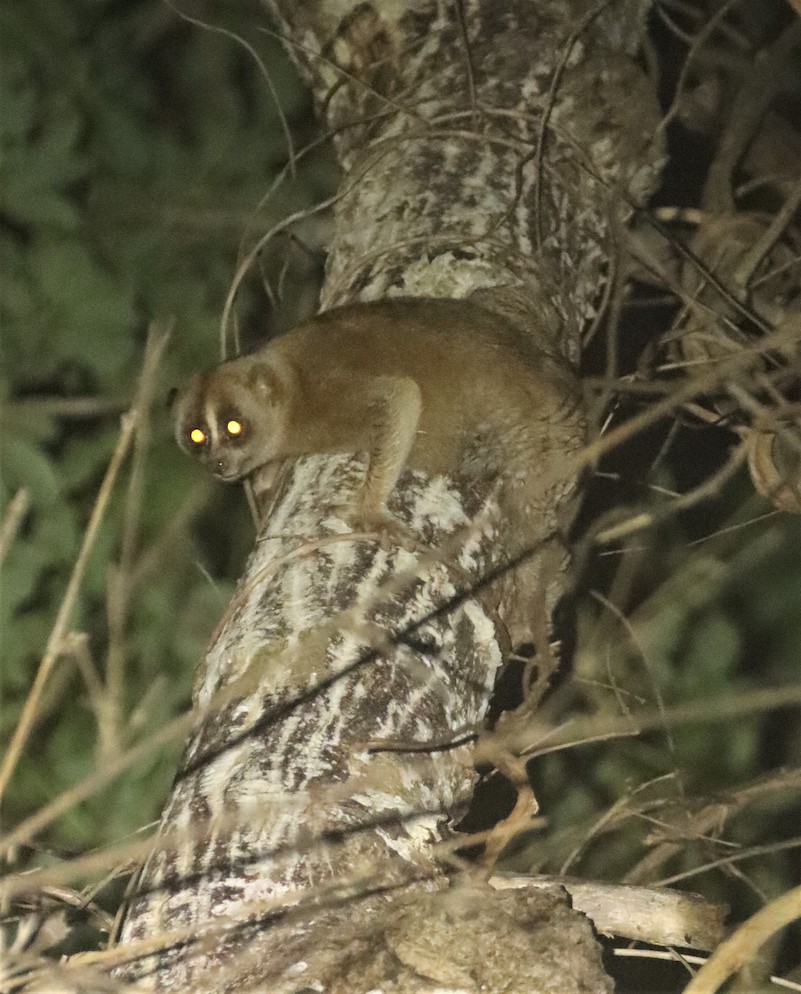
- Sunda Slow Loris (Nycticebus coucang) – very common and with effort can be seen throughout forest areas of Southern Thailand.
- Bengal Slow Loris (Nycticebus bengalensis) – very common and seen in Kaeng Krachan area – inside and outside the park in forested areas.
If you would like any additional information about where and how to view Thailand’s amazing primates, please feel free to contact me (cosm@patana.ac.th). I am hoping to offer primate tours in 2023 if the COVID situation relaxes a bit more!
Article and photographs by Coke Smith, the Environmental Science Leader at Bangkok Patana School and an avid nature photographer. Coke has published his wildlife images in many books and magazines over the years, including BBC Planet Earth and Nat GeoScience. For more information on any of the above local wildlife hotspots, please contact Coke (cosm@patana.ac.th).


